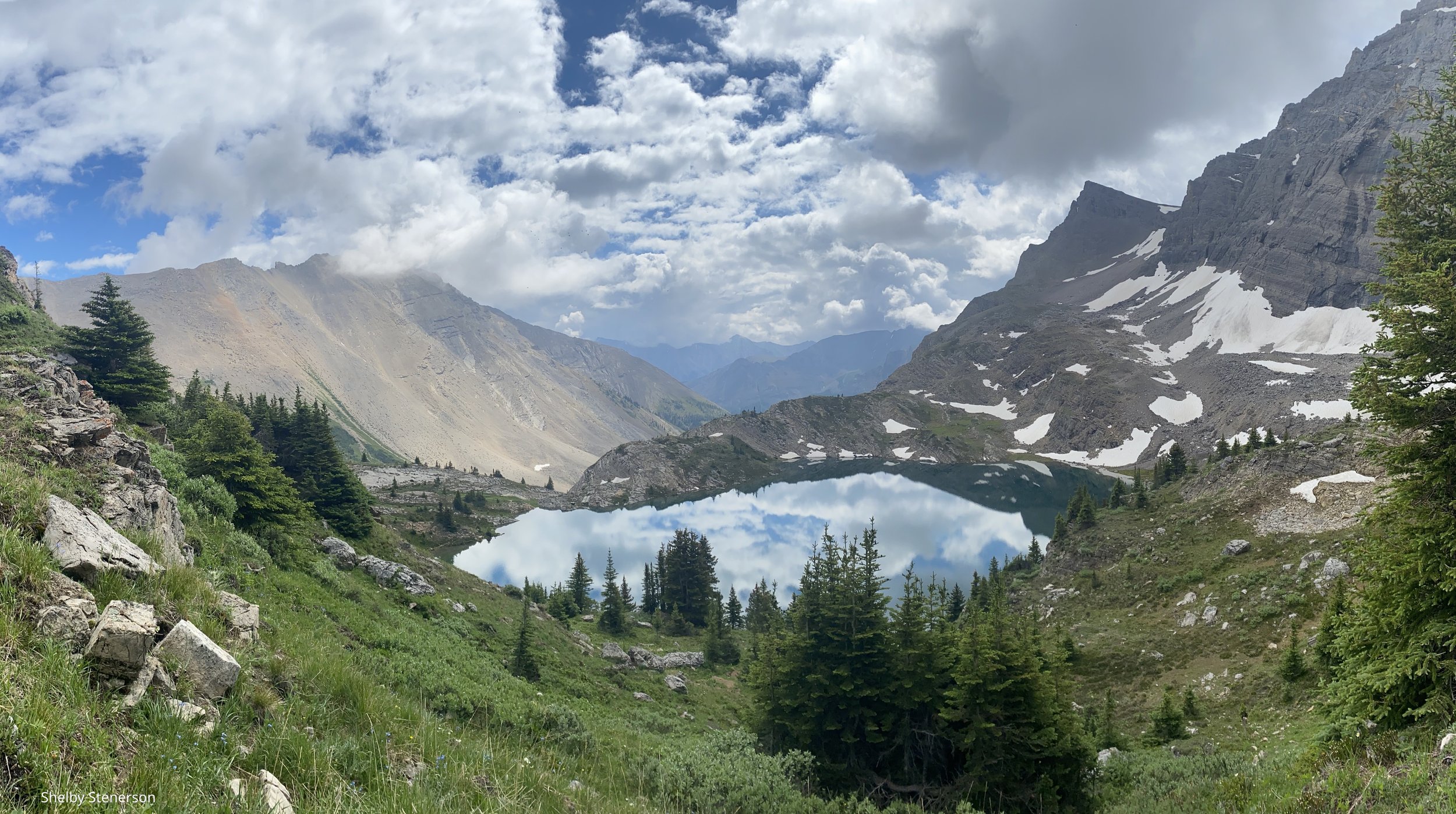
Ancient seas, shifting continents, and sheets of ice
Learn more about how these forces molded the Rockies to their present shape
The Canadian Rockies are outlined in blue, while the neighboring Columbia mountains are in green. The Rocky Mountain Trench defines the border between these two ranges, and is depicted in dark green.
Where are the Rockies?
The Canadian Rocky Mountains are the northern extension of the Rocky Mountain system, which stretches nearly 5000 km from the southwest United States into northern Canada. Geographically, the Canadian Rockies are bounded to the east by the prairies, to the west by the Rocky Mountain Trench, to the south by the US border, and to the north by the Liard River. The large geographic extent, and distinct biomes found at the borders, have made the Canadian Rockies a meeting point of ecosystems, species, and peoples for millennia.
Ancient sediments
The Rockies are made from rock that formed between 1.7 billion and 600 million years ago, in shallow seas. This rock dates to before land plants had emerged on earth, when almost all life was confined to the oceans.
Shifting continents
A long period of plate tectonic action lead to the lifting up of deposited sea sediment. The intense forces of plate tectonics lead to the layers of rock twisting and folding, creating some of the characteristic features of rock faces in the mountains. The shifting plates also lifted up entire slabs of the earth’s crust. You can see clear evidence of this, where whole mountains will have a a jagged face with exposed layers, while the backside is a flat sheet sloping down to the valley

The final process that created the present day Rockies was massive glaciation. The same glaciers that flattened the prairies carved wide U-shaped valleys out of rock. These glaciers retreated back into higher elevations less than 10 000 years ago. The ecosystems in the Rocky Mountains are some of the youngest in the world.
How is the landscape of the Rockies changing?
Land Use Change
At the landscape scale, ecosystems rely on connectivity to remain healthy. Humans also value connectivity, building roads and railroads to connect people and industry. Unfortunately, the infrastructure that connects humans often disrupts ecosystem connectivity. Roads and railroads are dangerous for animals to cross. We have seen recently that highways and railroads have the ability to isolate populations of animals, increasing the risk of extinction for these isolated groups.
There are currently efforts to restore ecosystem connectivity, both at the local and regional scale. Along Highway 1 in Alberta, wildlife overpasses continue to be installed to link opposite sides of the highway for wildlife. At a larger scale, conservation groups are working to create an unbroken chain of protected lands to ensure that the entire Rocky Mountain system can maintain connectivity, allowing animals to roam up and down the ranges as they once did.
The Effects of Fire
For the past 100 or so years, governments have pursued a policy of fire suppression, based on the view that fire damages the landscape and reduces the quality of forests. As time has gone on, we have gained a more nuanced understanding of fire, and have realized the utility that fire has to the landscape. However, we are now dealing with the effects of a legacy of fire suppression.
As fire returns to the landscape, we are seeing changes in where forests are, and how old they are. Fire suppression lead to an accumulation of fuel for fires, meaning that the current fires are more intense and larger than might be considered typical. As time goes on, we are sure to see changes in the distribution of forests and meadows, as fires re-balances the landscape.
Climate Change
At the largest scale, a changing climate will drive changes in the landscape. Climate change drives forest fires, by creating dry and hot summers that are more prone to fire season. As climate change continues to shift the nature of our seasons, with shorter, warmer winters and longer summers, we can also expect to see shifts in the ranges of plant and animal species.
Where species occur is often a reflection of the local climate. Minimum winter temperature, average yearly precipitation, and growing season length are all factors that determine which plant species can persist in a given location. As climate change shifts these factors, we can expect to see gradual change in the distribution of plant species, which will also result in changes where animal species can be found in the Rockies.

